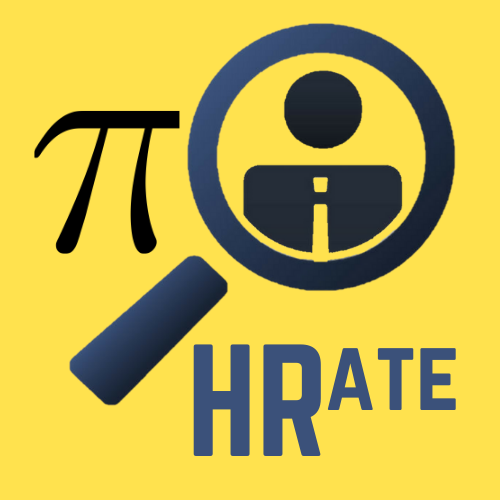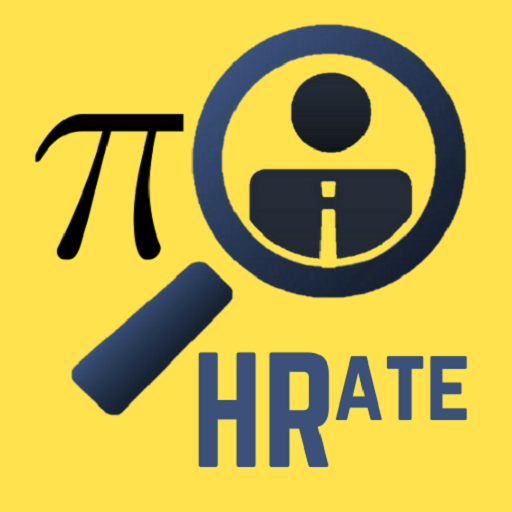Cracking the Code: A Deep Dive into Microsoft Technical Interview for Software Engineers

Landing a Software Engineer role at Microsoft, one of the world’s most innovative and respected technology companies, is a career milestone for many developers. But between you and that dream job lies a gauntlet of technical scrutiny: the Microsoft Technical Interview. This process is legendary for its rigor, designed not just to test what you know, but how you think under pressure, how you design complex systems, and how well you align with Microsoft’s culture and core competencies.
If you’re reading this, you’ve likely realized that generic preparation won’t cut it. The Microsoft interview process requires precision, depth, and a strategic approach tailored to their specific expectations. This article is your comprehensive blueprint. We will crack the code of the Microsoft technical interview, detailing the three core pillars of assessment “Coding Proficiency, System Design Mastery, and Behavioral Competencies” and providing actionable strategies to ensure you demonstrate the sharp, creative, and collaborative mindset Microsoft seeks in every Software Engineer.
Whether you are aiming for an entry-level position (often focused heavily on coding) or a principal engineering role (dominated by large-scale system architecture), understanding this deep dive is the first critical step toward receiving that coveted “congratulations” call.
I. The Foundational Pillar: Mastering the Microsoft Coding Interview (DSA)
The core of any Microsoft Technical Interview for a Software Engineer remains Data Structures and Algorithms (DSA). Recruiters use this section to assess your fundamental ability to write clean, efficient, and correct code. This isn’t about trivia; it’s about applied computer science and problem-solving.
Common Problem Categories in the Microsoft Coding Interview
- Arrays and Strings: Always high frequency. Focus on two-pointer techniques, sliding windows, manipulation, and efficient searching/sorting (e.g., merging sorted arrays, finding duplicates).
- Trees and Graphs: Crucial for demonstrating mastery. Expect problems involving traversals (BFS, DFS), tree property validation (e.g., BSTs), graph algorithms (Dijkstra’s, topological sort), and minimum spanning trees.
- Dynamic Programming (DP) and Recursion: These are often used as filters. DP questions assess your ability to recognize overlapping subproblems and optimize recursive solutions. Practice classics like coin change, knapsack, and longest common subsequence.
- Hash Maps and Sets: Essential for O(1) lookups. Be ready to use them to optimize solutions involving frequency counting or complex indexing.
- Linked Lists: Requires precision in handling pointers. Focus on reversal, cycle detection (Floyd’s Tortoise and Hare), and merging lists.
Strategies for Success in the Coding Round
- Clarify and Communicate: Never jump straight to coding. A great Software Engineer asks clarifying questions. What are the constraints? Input range? Edge cases (null, empty)? Restate the problem in your own words to ensure alignment with the interviewer.
- Develop the Brute Force Solution: Start by outlining the simplest, most obvious (even if inefficient) solution. This demonstrates basic comprehension and establishes a baseline time/space complexity (T/S).
- Optimize and Analyze: This is where the real interview happens. Ask: “Can we do better?” Analyze the bottlenecks of the brute force approach. Introduce optimization techniques (memoization, two pointers, etc.) and calculate the improved T/S complexity. Always justify your data structure choices.
- Code Cleanly and Out Loud: Write production-quality code. Use meaningful variable names. Break complex logic into helper functions. Crucially, narrate your thought process while coding. Your communication skill is being evaluated as much as your code itself.
- Test Thoroughly: Once finished, don’t stop. Walk through your code with an example, including the challenging edge cases you identified earlier. Correct any bugs on the fly—this is a massive positive signal in a Microsoft Technical Interview.
- Language Proficiency: While they generally accept popular languages (Python, Java, C++, C#), pick the one you are most fluent in. Confidence in syntax minimizes errors, allowing you to focus on the logic required for the Software Engineer role.
II. Scaling Up: The Microsoft System Design Interview
The System Design Interview is reserved primarily for candidates applying for Senior (L5+), Principal, or Architect-level Software Engineer roles. Microsoft views this as an essential measure of how you handle complexity, trade-offs, and scalability.
Unlike the binary nature of a coding problem, System Design is open-ended. The goal is not to produce a perfect diagram, but to drive the discussion, manage ambiguity, and articulate technical rationale.
Key Topics and Design Principles
- Core Components: Load balancers (L4 vs L7), API Gateways, Microservices vs Monoliths, Asynchronous Communication (Queues/Kafka), Content Delivery Networks (CDNs).
- Databases: Knowing when to use SQL (Relational/Consistency) versus NoSQL (Scalability/Flexibility). Understanding sharding, replication, and indexing strategies.
- Caching: Strategies (Read-Through, Write-Through, Write-Back), placement (client, CDN, application layer, database layer), and invalidation policies.
- Scalability and Availability: Discussing trade-offs between consistency, availability, and partition tolerance (CAP Theorem). Horizontal vs. Vertical scaling.
- Common Design Problems: Designing a URL shortener, a Twitter feed, a Netflix recommendation system, or a large-scale chat application. These scenarios are typical of a high-level Microsoft Technical Interview.
Structuring Your System Design Approach
- Understand the Scope and Constraints: Start with mandatory clarification. What are the Functional Requirements (must-haves)? What are the Non-Functional Requirements (latency, availability, scale)? Perform rough capacity planning (e.g., “We expect 1 billion users and 1 million QPS”). This scoping is vital for a targeted discussion in the Software Engineer interview.
- Outline High-Level Design: Draw the main components (clients, APIs, database, load balancer). Explain the data flow. This provides a framework for the rest of the conversation.
- Deep Dive into Core Components: Pick one or two challenging areas (e.g., database schema for the feed, sharding strategy, or caching mechanism) and discuss them in detail. The interviewer will likely guide you toward specific deep dives.
- Discuss Trade-offs and Bottlenecks: Demonstrate critical thinking. Why did you choose DynamoDB over PostgreSQL? What is the single point of failure? How would you monitor the system? A successful Microsoft Technical Interview involves acknowledging imperfections and offering concrete solutions.
Remember, the System Design Interview is a collaborative dialogue. You are presenting architectural choices and justifying them to a peer.
III. The Human Element: Behavioral Questions and Microsoft Competencies
It’s a common mistake for Software Engineer candidates to neglect the behavioral portion. At Microsoft, these rounds (often called “Culture” or “Competency” rounds) are crucial. They test whether you embody the leadership principles and cultural values, especially the ‘Growth Mindset’ that Satya Nadella has championed.
Microsoft’s Core Competencies
- Growth Mindset: Demonstrating curiosity, learning from mistakes, seeking feedback, and believing that skills can be developed through dedication. They want to know how you handled professional failure.
- Customer Obsession: Showcasing how your technical work directly benefits the user. How did you advocate for the customer in a technical design decision?
- Collaboration and Teamwork: Working effectively across boundaries, handling disagreements, and achieving team goals.
- Drive for Results: Overcoming obstacles to deliver impact, prioritizing effectively, and taking ownership.
The STAR Method: Your Behavioral Strategy
To answer behavioral questions effectively in the Microsoft Technical Interview, use the STAR (Situation, Task, Action, Result) method:
- S – Situation: Set the scene. Describe the context and background of the challenge or task.
- T – Task: Explain your specific responsibility or goal within that situation.
- A – Action: Detail the steps you personally took to address the task. (Focus heavily on *your* actions, not the team’s).
- R – Result: Conclude with the outcome. Quantify the results whenever possible (e.g., “reduced latency by 20%,” “increased team efficiency,” or “learned X and applied it to Y”).
Be prepared with 10-15 well-polished STAR stories covering conflicts, failures, successes, learning experiences, and difficult technical trade-offs. This preparation ensures you meet the required standard for a Software Engineer role at a global giant.
IV. Preparing for the Technical Screening and Full Loop
The path to the final offer generally involves a brief phone screen (often a quick coding challenge) followed by a 4-5 round onsite (or virtual) loop. This full day of interviews is where the true test lies.
The Study Roadmap for the Microsoft Technical Interview
- Master LeetCode (The Microsoft List): While general practice is good, focus your coding preparation on the frequency-ranked problems for Microsoft on platforms like LeetCode. Pay close attention to medium-difficulty problems; these are the sweet spot for the Microsoft Coding Interview.
- Dedicated System Design Study: For experienced Software Engineer roles, allocate at least 40% of your study time to System Design. Read foundational texts (like Designing Data-Intensive Applications) and practice sketching out solutions for common designs.
- Mock Interviews are Non-Negotiable: Nothing prepares you for the pressure like a mock interview. Practice explaining your logic out loud and coding on a whiteboard or collaborative editor. This addresses the communication aspect of the Microsoft Technical Interview directly.
- Know Your Resume Inside Out: Be ready to discuss the trade-offs and design decisions behind every project listed on your resume. Interviewers often use your past work as fodder for mini-System Design questions or deep technical dives.
- Research the Specific Team: If possible, know the products the team works on (Azure, Xbox, Windows, Office 365). Tailor your project discussions and enthusiasm to align with their mission.

V. The Mindset: Beyond Technical Proficiency
While technical skill is table stakes for a Software Engineer at Microsoft, passing the interview requires more than just correct answers. It requires demonstrating specific professional traits.
- Intellectual Humility: A willingness to accept feedback and change your approach if the interviewer steers you in a better direction. This demonstrates the Growth Mindset they cherish.
- Clarity and Structure: Whether you are describing a complex graph algorithm or a distributed system architecture, your explanation must be structured, step-by-step, and easy to follow.
- Proactivity in Debugging: If your code fails during the test walk-through, show excitement, not panic. A great Software Engineer views debugging as part of the solution process. Proactively finding and fixing errors signals competence.
- Handling Ambiguity: Especially in the System Design Interview, the interviewer might give you vague requirements. Your ability to ask smart questions to narrow down the scope is critical.
- Energy and Enthusiasm: Microsoft values candidates who genuinely love building technology. Let your passion for the Software Engineer role show through your discussions.
The journey through the Microsoft Technical Interview is challenging, but rewarding. It demands comprehensive preparation across all three pillars: the precision of coding, the breadth of design, and the alignment of your professional experience with Microsoft’s competencies.
Conclusion: Earning the Microsoft Badge
Success in the Microsoft Technical Interview is less about innate genius and more about disciplined, strategic preparation. By dedicating time to mastering the key DSA topics, structuring your System Design thinking, and polishing your behavioral stories using the STAR method, you transform from a candidate who hopes to succeed into one who is systematically prepared to showcase exactly what Microsoft needs: a thoughtful, highly capable Software Engineer ready to build the next generation of global technology.
Approach each round not as a test to survive, but as an opportunity to collaborate and demonstrate your value. Crack the code of communication and complexity, and that Microsoft offer will be within reach.
- The 2026 HR Strategic Mandate: Governing Agentic Autonomy and Engineering the Human Workplace
- Why Walmart’s Store Managers Are Out-Earning MBA Grads (Without the Debt)
- New Tech, New Work: Redefining the Value Case for Technology Investment in the Modern Enterprise
- Top 10 McDonald’s Interview Questions (and How to Answer Them)
- No Degree Required: How IBM’s “New Collar” Jobs are Changing Tech Hiring
FAQ
How is the Microsoft Technical Interview structured for a Software Engineer?
The interview process typically involves a phone screen followed by a full onsite (or virtual) loop of 4 to 5 rounds. These rounds usually cover three main areas: 1) Coding/Data Structures and Algorithms (DSA), 2) System Design (especially for mid-level and senior roles), and 3) Behavioral/Competency questions (testing alignment with Microsoft’s culture and Growth Mindset).
What difficulty level of coding problems should I focus on for the Microsoft Coding Interview?
Candidates should primarily focus on Medium difficulty problems on platforms like LeetCode. While some Easy problems may appear in the initial screen, the bulk of the onsite interviews will revolve around Medium problems in DSA, particularly those involving trees, graphs, dynamic programming, and efficient array manipulation.
Is the System Design Interview mandatory for all Software Engineer candidates?
Generally, the System Design Interview is mandatory for Senior Software Engineer roles (L5 and above) or specialized architecture roles. Entry-level or junior candidates (L3/L4) often have a process that is much more heavily weighted toward DSA and basic object-oriented design, although practicing System Design fundamentals is always beneficial.
How important are behavioral questions in the Microsoft interview process?
Behavioral rounds are critically important, often accounting for 20-25% of the overall evaluation. Microsoft highly emphasizes its cultural values, particularly the Growth Mindset and Customer Obsession. Failing a behavioral round, even with strong technical performance, can lead to a rejection. Candidates should prepare detailed responses using the STAR method.
What is the single biggest mistake candidates make in the Microsoft Technical Interview?
The biggest mistake is failing to communicate their thought process. Interviewers are assessing how you solve problems, not just the final solution. Candidates who jump straight into coding without clarifying requirements, outlining their approach, discussing time complexity, or walking through test cases often fail, even if their final code is technically correct. Communication is key to demonstrating competence as a Software Engineer.



